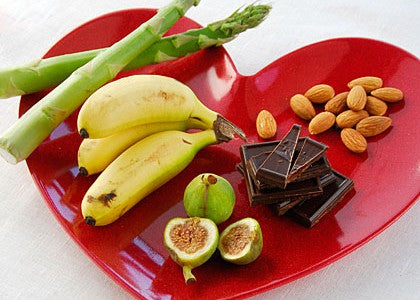With Valentine’s Day in our midst, many couples are planning for a romantic evening. Perhaps one of the most romantic gestures is cooking for your loved one. While searching for the perfect romantic meal perhaps you’ve decided to add aphrodisiacs to your menu in the hopes of making the romance stretch beyond dinner.
We’ve all heard of aphrodisiacs, but is there any actual science behind these claims?
In short… no.
In fact, the FDA has even said there is no scientific evidence that aphrodisiacs are effective. But not having scientific evidence doesn’t mean that it’s not real, it just means we currently don’t have evidence that it’s real. So let’s not end the discussion there…
If you dig deeper, there might be some plausible scientific explanations behind those romance sparking foods. Scientists have investigated claims that certain foods increase our libido. In some cases, they have discovered different foods can stimulate our body in different ways. However when it comes to aphrodisiacs, measuring someone’s libido was challenging to say the least! And scientists have their doubts whether the effects of foods are big enough for us to notice. People tend to agree that the 3 most popular romance sparking foods are: oysters, spicy foods and chocolate. So what’s the truth behind these 3 popular aphrodisiacs?
1. Oysters
Oysters are known to be high in zinc, a nutrient we often lack in our diet. Theoretically if we lacked zinc, increasing our zinc consumption could increase our overall health. Having better overall health makes you feel good which might spark romance.
Oysters also have surprisingly high levels of iron. Individuals who are iron deficient tend to be tired. However, taking an iron supplement to manage iron deficiency means you might be able to stay up passed your usual bedtime.
2. Spicy Foods
Spicy foods are also sometimes believe to spark romance. They contain the active ingredient capsaicin (think cayenne pepper). Capsaicin can have a really strong effect on our body. It makes us sweat and our heart races. This might set the mood right for a romantic evening that continues past dinner.
3. Chocolate
Chocolate may actually affect hormone levels in your brain. Primarily, dark chocolate contains flavanol antioxidants and alkaloids. Both of these cause increased levels of serotonin (the feel-good hormone) in the brain. Chocolate also has caffeine. This might help you fight off fatigue long enough to enjoy some intimate time with your partner.
The Secret Ingredient
But there might be a real secret weapon in the age-old aphrodisiacs. It’s called phenylethylamine. During the ‘honeymoon’ phase, couples have high levels of phenylethylamine. If a couple breaks-up, phenylethylamine tends to drop. So what food has phenylethylamine?….Chocolate. BUT, scientists say that the phenylethylamine is metabolized too quickly to have any real effect.
The Genetics of Sexual Desire
Although science cannot say whether aphrodisiacs actually work, there might be a link between sexual desire and genes. Scientists found a ‘high-arousal’ gene that is carried by 20% of the population. People carrying this gene have a slightly greater desire for intimacy. It is only slightly greater, but perhaps when mixed with phenylethylamine the romance might last all night.
So what are you having for dinner?

